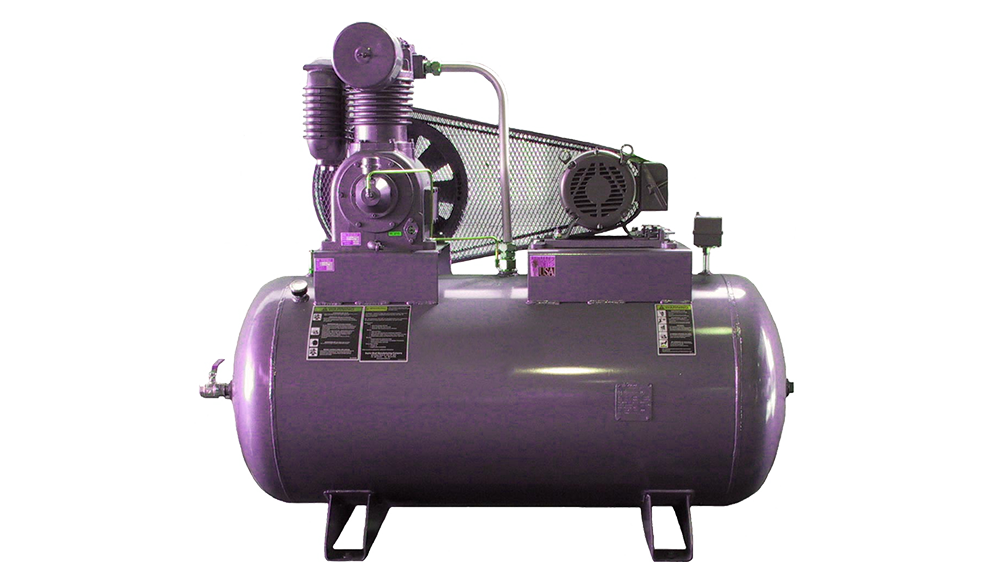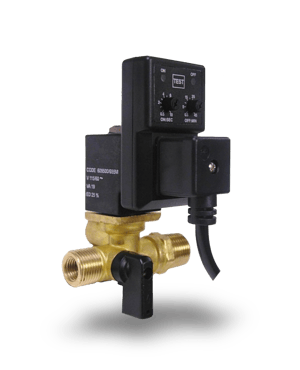2 min read
Protect Your Air Compressor with One Simple Product
Tsunami Team
:
Apr 15, 2021 12:00:00 AM

Though air compressors are presented as heavy-duty, durable and reliable pieces of equipment built to withstand any shop or facility, they have a weak point that is more common, and more dangerous, than one would presume. Read on to learn about the biggest fault that could happen to any air compressor without the proper accessory product.
In this article:
- Saving Your Air Compressor From Damage and Decreased Efficiency
- What Happens if a Compressor Tank is Never Drained?
- VIDEO: Why Your Air Compressor Needs a Drain
- The Simple Solution
Saving Your Air Compressor from Damage and Decreased Efficiency
As ambient air is compressed into a receiver tank, the air is not only heated through the compression process, atmospheric moisture (water vapor) is also compressed. The compressed air can only hold so much water in vapor form so the remainder falls out in the receiver tank as water.
Then, as the air cools inside the receiver, additional water is deposited into the tank through this cooling process. Allowing water to remain inside the tank can wreak havoc on your air system and do great harm to the receiver tank such as internal corrosion.
What Happens if a compressor Tank is Never Drained?
Ignoring the water build-up in an air compressor tank is bad news for your air supply and the receiver tank’s physical integrity. There are several consequences that can occur if the tank is not drained properly:
Efficiency Decreases
As water continues to collect in the tank, it is taking up valuable storage volume for the compressed air generated by your compressor. More water in the tank means less space is available for storing the compressed air. With less stored air to do “work” downstream, your compressor will run more often to maintain the volume of air your system requires.
This not only puts more unnecessary stress on the compressor components but also increases the air temperature of the compressed air, which in turn creates more moisture inside the tank.
Damage to Attached Tools
Any contaminant in an air compressor can make its way with the air to the tools attached. This can interfere with efficiency and also can become expensive when you consider replacement costs. Dirt and water buildup can also block the airflow and cause a decrease in pressure.
Decreased Air Volume
Water that accumulates in an air compressor decreases the air volume in the compressor’s tank. This in turn can cause a decrease in pressure when it is needed.
The video below provides for a short demonstration of the phenomenon of how more stored volume of compressed air allows your air system to do more “work” downstream.
Rust
Even small amounts of standing water encourage and accelerate the development of corrosion, causing the bottom of the tank to rust and decay over time.
Risk of a Tank Explosion
While you may think you are ok draining your tank when you remember to do so, with no schedule, that may not be the case. Periodically draining your compressor tank is not enough to help prevent the issues that can arise inside the tank from exposure to sitting water. Couple corrosion with the constant exposure to high-pressure air, and catastrophic failure could occur due to weak spots in the tank.
Serious injury, even death, from an air compressor explosion is one possible outcome, not to mention the costly damage and destruction to equipment and structures. For a compressor maintenance schedule, click here.
The Simple Solution: Installing an Automatic Tank Drain
The best product to help solve the problem of water build up in your compressor tank is an automatic tank drain.
Designed for peace of mind, the Moisture Minder® Electronic Drain Valve automatically discharges moisture and contaminants from your receiver. Not only does the Moisture Minder® EDV remove water, is helps in keeping the compressor tank at maximum volume to store the compressed air, making your air compressor more efficient.
It is a simple, easy-to-use product to help prevent the foreseeable issues related to water build up.
Looking to learn more about drains? Click here to learn about the different types of drains.

